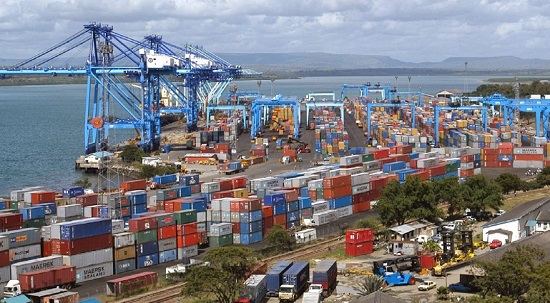Cargo clearance at Mombasa Port is expected to become more efficient following the joint implementation of pre-arrival processing by the Kenya Revenue Authority, Kenya Ports Authority, Kenya Bureau of Standards, and Kenya Trade Network Agency.
This initiative aligns with the findings of the 2024 Economic Survey, which reported a 6.5% increase in import traffic through Mombasa Port, rising from 26.7 million metric tonnes in 2022 to 28.4 million metric tonnes in 2023.
Pre-arrival processing facilitates the early electronic submission of import documentation and other necessary information to customs and other government agencies, enabling document verification before the goods arrive in Kenya. This system aims to reduce delays and congestion at entry points, thereby shortening the clearance time upon arrival.
The enhanced and integrated execution systems—Integrated Customs Management Systems, Kilindini Waterfront Automated Terminal Operating System, and Kenya Trade Network Agency’s Trade Facilitation Platform—were upgraded in December last year. These systems now allow customs entries to be declared using the bill of lading as the base document, which importers receive once the consignment is loaded onto the vessel.
“All importers are eligible for this program and do not require any special approval. The importer or their Clearing Agent should lodge a declaration with customs and make payments at least 48 hours before the expected arrival of the vessel to benefit from pre-arrival processing,” explained Rhoda Wambui, Tax Education Officer.
Wambui emphasized that certain components are crucial for the smooth operation of pre-arrival clearance (PAC), including the automation of the clearance system to enable electronic data exchange of scanned documents, and the advance electronic submission of documentation such as manifests, entries, invoices, certificates of origin, permits, and certificates.
Other requirements include coordinated border management between customs and other government agencies, a release decision by customs to permit goods to be released upon arrival, and clearance by a customs officer, who ensures the accurate and authentic declaration of customs duties, taxes, fees, charges, and post-clearance audits.
According to the 2024 Economic Survey, import traffic through Mombasa Port increased by 6.5% to 28.4 million metric tonnes in 2023 from 26.7 million metric tonnes in 2022.
Dry general cargo imports rose by 9.3% to 12.8 million metric tonnes in 2023 from 11.7 million metric tonnes in 2022. The volume of dry bulk cargo increased by 4.8% to 6.5 million metric tonnes in 2023 from 6.2 million metric tonnes in 2022, while bulk liquid import volumes grew by 4.0% to 9,159 thousand metric tonnes in 2023.
During the same period, transit traffic increased by 10.5% to 10.2 million metric tonnes in 2023 from 9 metric tonnes in 2022. However, the number of landed motor vehicles dropped by 29.2% to 70,275 units in 2023 from 99,239 units in 2022.
Total transit volume rose by 11.5% to 11,413 thousand metric tonnes in 2023 from 10,234 thousand metric tonnes in 2022 . Uganda’s share of total transit decreased to 62.3% in 2023 from 71.5% in 2022, with the volume dropping to 7,115 thousand metric tonnes in 2023 from 7,319 thousand metric tonnes in 2022.
Transit to and from Ethiopia more than doubled to 14,383 metric tonnes in 2023 from 6,915 metric tonnes in 2022. Additionally, traffic to and from the Democratic Republic of Congo and South Sudan increased by 56.9% and 52.1%, respectively, during the same period.

















